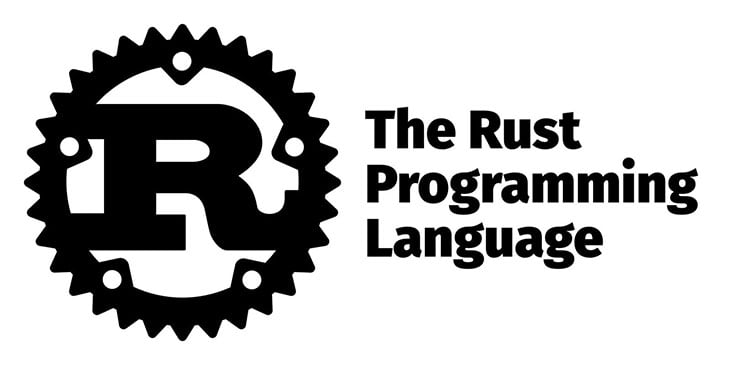
With their diverse use cases, Rust and Swift share numerous similar features. The languages are both general-purpose and provide modern programming features.

While Apple built the Swift programming language to replace Objective-C and the Mozilla Foundation built Rust as a substitute for C++ for writing memory-safe code, the languages have increased in popularity amongst the developer community.
Swift has found a home as a UI tool for iOS and macOS, and Rust is popularly used for applications that require low-level expressivity, like embedded systems programming.
This article compares the Rust and Swift programming languages to give you insights into their use cases, similarities, and features.
The Replay is a weekly newsletter for dev and engineering leaders.
Delivered once a week, it's your curated guide to the most important conversations around frontend dev, emerging AI tools, and the state of modern software.

Swift is an intuitive, imperative, multi-paradigm, general-purpose programming language. It’s primed for its safety, performance, modern programming features and practices, and easy implementation of design patterns.
Swift’s speed, conciseness, and expressivity are reasons developers choose Swift. Although Swift is cross-platform, Swift is mostly used for building applications that run on macOS, iOS, iPadOS, tvOS, and watchOS.
Swift has eventually replaced its predecessor language, Objective-C, due to its unique features that were a power-up for developers. Swift is also used for scaling cloud services.
Here’s a simple “Hello World” program in Swift:
print("Hello, World!")
The print function prints the specified text or variable to the console.
Swift’s features make development more manageable and flexible with access to low-level interaction. Swift provides closures, tuples, generics, range loops, functional programming support, inbuilt error handling, and access to program control flow.
Below are some of the features that make Swift stand out.
Safety is one of the watchwords in Swift’s design. Unlike its predecessor language, Swift eliminates unsafe code like preinitialized variables, performs overflow checks on arrays and integers, and has a garbage collector that automatically enforces memory safety and common memory mistakes.
Swift’s safety comes at a worthy cost of strictness, but as you write for Swift code, you’ll get accustomed to the experience and appreciate Swift’s safety features.
Swift is “lightning fast,” since the language leverages the highly performant LLVM (low-level virtual machine) compiler technology. Swift code is transpiled to machine code optimized to run on modern hardware.
Swift’s design includes features that provide speed from low-level primitives to classes and generics that combine speed and flexibility.
Expressivity is one of the reasons developers love Swift. The language provides four types of expressions (prefix, infix, primary, and postfix) for various operations.
Features like generics, functional programming functions, easy error handling, and many more features make Swift easier to use than most modern programming languages.
Swift’s elegance ships with many advantages. Let’s talk about some of the reasons developers love Swift.
First, Swift is highly expressive, and its expressivity makes development easier and faster. Since Swift is fast, highly performant, and ensures program safety, it’s a good choice for building applications.
Swift isn’t heavy on a computer’s memory resources; Swift is garbage collected for automatic memory management.
In addition to Swift’s interoperability with its predecessor language (Objective-C) and C++, Swift is a general-purpose language with cross-platform support.
Swift is the default language for building on Apple’s products and devices, and one of the disadvantages of using Swift is the limited support for third-party tools, IDEs, and environments.
Also, since Swift is mainly famous for Apple’s products and operating systems, there’s a finite pool of Swift developers and communities.

Rust is an expressive, general-purpose, multi-paradigm programming language with type safety, memory safety, and concurrency features.
Rust has been the most loved programming language in many surveys. Rust has a rich type system, supports programming in functional and object-oriented paradigms, and uses a borrow checker to ensure program memory safety on compile time.
Mozilla built Rust to address C++’s technical debt. Rust is used in most fields where C++ used to be the go-to language like systems programming, server-side programming, cloud development, and use cases where low-level interaction with hardware and speed is essential.
Here’s a simple “Hello World” program in Rust:
fn main() {
println!(“Hello, world!”);
}
The println macro writes the specified text or variable to the console.
Rust provides move semantics, threads without data traces, efficient C interoperability, and many more features.
Memory safety is Rust’s main feature. Unlike most languages like Swift and Go which use garbage collectors and C/C++ for express memory management (with algorithms like RAII for memory management), Rust employs a borrow checker to ensure that programs use memory safety. There are no dangling pointers all at compile time before executing the program.
Rust’s memory management model makes the language one of the fastest memory-safe languages desirable for comprehensive use cases.
Rust supports a rich type system, multiple data types, and support for programming in functional and object-oriented paradigms, increasing developer expressivity and flexibility.
Rust also supports generics and many other features in modern programming languages.
Rust is as fast as C and C++ — its memory safety and modern programming features, like generics, make the language desirable for building applications that require high performance.
Rust is general-purpose. You can use Rust for many applications, from command-line applications to GUIs, games and gaming engines, web applications (server-side and frontend through web assembly), networking, and embedded systems.
Rust is a relatively new language and the developer pool is limited since Rust is tasking to learn. There are many new concepts in the language. Rust is one of the first languages to implement a borrow checker and since most developers use garbage-collected languages, getting accustomed to memory management in Rust is tasking.
Since Rust uses a borrow checker to enforce memory management before program execution, the process of borrow checking may be longer for more extensive programs, making Rust slow to compile.
Swift and Rust share many similarities in features and design. Both languages aim to build safe programs and use different algorithms/architecture to achieve program safety (Rust and its borrow checker, Swift and its garbage collector).
The two languages are also very expressive. They support generics and programming in multiple programming paradigms and design patterns with Swift’s classes and Rust’s structs.
Nonetheless, the two languages differ in some aspects, which explains why developers use them in contrasting fields.
Here’s a comparison table of the metrics that make up the two languages.
|
Metric
|
Swift
|
Rust
|
|
Expressivity
|
Highly expressive with generics support
|
Highly expressive with generics support
|
|
Memory safety
|
Garbage–collected, automatic memory safety
|
Ownership model memory safety
|
|
Abstraction level
|
High-level
|
Low-level
|
|
Use cases
|
Apple OS development and cloud
|
Networking, web, systems, applications, CLI
|
|
Popularity
|
Very popular
|
Very popular
|
|
Programming paradigm
|
Imperative, object-oriented, declarative, protocol-oriented
|
Procedural, functional, object-oriented
|
Swift is a high-level language, and unlike Rust, that’s desirable for system applications because of its low-level expressivity.
Practically, there are no fields where these languages compete. There’s hardly any support for building iOS, macOS, and other Apple OS apps with Rust, and most developers use Swift for the sole purpose of building mobile applications, unlike Rust, where the developers are actively exploring use cases for the language with systems programming being the top of the list.
This tutorial taught you about the Swift and Rust programming languages, their features, use cases, pros and cons, and similarities and differences.
If you’re exploring using Swift and Rust for a full-stack application, you can use Swift for the UI (frontend) of the application and Rust for the backend since there are many full-stack supported frameworks in the Rust ecosystem.
Debugging Rust applications can be difficult, especially when users experience issues that are hard to reproduce. If you’re interested in monitoring and tracking the performance of your Rust apps, automatically surfacing errors, and tracking slow network requests and load time, try LogRocket.
LogRocket lets you replay user sessions, eliminating guesswork around why bugs happen by showing exactly what users experienced. It captures console logs, errors, network requests, and pixel-perfect DOM recordings — compatible with all frameworks.
LogRocket's Galileo AI watches sessions for you, instantly identifying and explaining user struggles with automated monitoring of your entire product experience.

Modernize how you debug your Rust apps — start monitoring for free.

Container queries let components respond to their own layout context instead of the viewport. This article explores how they work and where they fit alongside media queries.

React Server Components vs Islands Architecture: Learn how each reduces client JavaScript, impacts hydration and interactivity, and which trade-offs matter for production performance.

Large hosted LLMs aren’t always an option. Learn how to build agentic AI with small, local models that preserve privacy and scale.

What storylines defined 2025 in frontend development? We power rank them all, from AI advancements to supply chain attacks and framework breakthroughs.
Hey there, want to help make our blog better?
Join LogRocket’s Content Advisory Board. You’ll help inform the type of content we create and get access to exclusive meetups, social accreditation, and swag.
Sign up now
2 Replies to "Swift vs. Rust: Comparison guide"
Hi,
This article provides a few but very important WRONG information, such as Swift being garbage collected (it’s not; it’s actually very similar to Rust’s model) and Swift only running on Apple OS (it’s first-party supported on Linux).
I was thinking the same points as I read this. And the lack of garbage collection is one of the core advantages of Swift and very widely known in the Swift community. ARC is actually more mature and predates Swift. You should correct this and find more convincing reasons to criticise Swift.